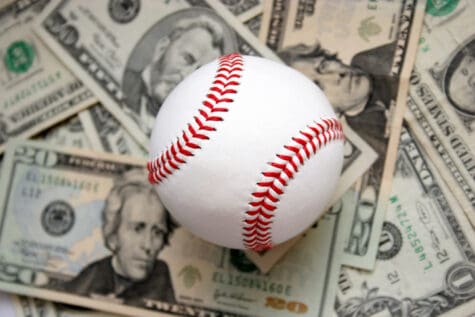 One of my favorite movies of all time is Moneyball. In the film Brad Pitt portrays legendary general manager Billy Beane who is credited with changing the paradigm of how baseball players are analyzed and assessed for value. In a classic scene, he gets into an argument with his lead talent scout and tells the scout how tired he is of hearing them say “we know” when determining if a player is going to be a star. Beane make the argument that they don’t “know” and the sooner they realize this simple fact the sooner their franchise will become successful.
One of my favorite movies of all time is Moneyball. In the film Brad Pitt portrays legendary general manager Billy Beane who is credited with changing the paradigm of how baseball players are analyzed and assessed for value. In a classic scene, he gets into an argument with his lead talent scout and tells the scout how tired he is of hearing them say “we know” when determining if a player is going to be a star. Beane make the argument that they don’t “know” and the sooner they realize this simple fact the sooner their franchise will become successful.
The same can be said for trading in the market. This may be shocking for some of you to hear, especially coming from an investment advisor, but nobody “knows” what will happen next on Wall Street. In fact, my fellow advisor at Stewardship Capital, Aaron Pickert is fond of saying that “the market’s great joy in life is to confound the largest amount of people it possibly can.”
Some advisors will agree with that statement and conclude that therefore “buy and hold” strategies are the only way to go. If you’re young and don’t need the money for decades this strategy can work. However, if you’re at or near retirement you may not have the time or the temperament to let your balances ebb and flow through an entire market cycle. That’s why I don’t believe a static investment model is the best way for those with a shortened time horizon to be invested.
To return back to my example of Billy Beane, after coming to the realization that there was no such thing as certainty when it came to major league prospects, he didn’t just throw his hands in the air and say since we can’t know who will succeed and who will fail we’re just going to keep playing the players we have for the next decade and hope enough of them pan out to win more games than we lose. Instead, with a team of statistical analytics gurus he set forth on a new tactic of measuring probabilities and likelihoods to gain an advantage over opponents.
In investing this technique is called technical analysis. Using statistics, historical data and behavioral principles, firms like ours actively make changes to client accounts based on a variety of factors. I believe this methodology is best equipped to handle times of great uncertainty like the ones we are currently living in.
While its true markets are still near record highs, there are many unknowns that could quickly lead us into another massive downturn like the one we experienced this past spring. Many regions both here and abroad are experiencing surges in Covid 19 cases, social unrest has caused waves of violence through many of our major cities, and our presidential election is a virtual tie. It’s safe to say uncertainty is at near historic levels.
Given that Wall Street thrives on predictability it’s no surprise to me that market volatility has once again returned. As we move into the fall I believe that volatility will only increase. That’s why for the past few weeks we have begun to become more defensive in the accounts we manage. How do we know this is the right move? Simple answer….we don’t. A Covid vaccine could be released to the public tomorrow, unrest could calm, a clear winner could be determined on November 3rd and markets could rally.
For us though the question is what is the most likely scenario, and for the time being we believe enough danger exists to at least put some money aside just in case. If you would like more information about technical analysis or how we use it in trying to predict future market moves contact us at info@stewcap.com
